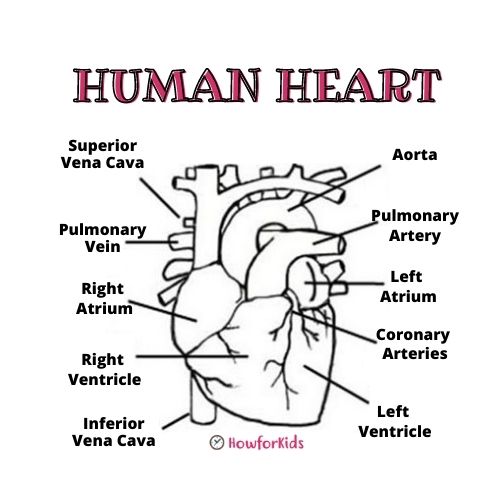

A ventricular septal defect occurs in some newborns where the septum (E) does not close completely during development. Based on your knowledge of the heart, describe what happens to the blood of someone who has this condition.Ĥ. Mitral regurgitation is a heart condition that occurs when the mitral valve does not close fully. Compare the direction of blood flow in the pulmonary artery to the pulmonary vein.ģ. Compare the location of the tricuspid and bicuspid.Ģ. Kids will also see the pathway of blood as the heart pumps. It’s a great way to introduce kids to the left ventricle, the right ventricle, the left atrium, and the right atrium. Red the descriptions carefully and trace the flow of bloon in the heart using arrows.ĭon't forget to LABEL the parts of the heart on the diagram!ġ. Heart Anatomy Clip Art, Coloring Pages, Labeling Worksheets and More You’ll find a collection of clip art, coloring pages, labeling worksheets, and more. The aorta forms an arch as blood is routed to the lower part of the body where it oxygenates organs and muscles. Color the aorta dark red.īlood enters the aorta and will travel to the head and shoulders through three smaller arteries: the brachiocephalic (6a), the left common carotid (6b), and the left subclavian (6c). A powerful contraction of the left ventricle will send blood through the aortic valve (C) and into the largest artery of the body, the aorta (6). Color the left atrium red.įrom the left atrium, blood goes through the bicuspid valve, which is also called the mitral valve (D) and enters the most muscular part of the heart, the left ventricle (4). Oxygenated blood returns from the lungs through the left and right pulmonary veins (9) which empties into the left atrium (3). Browse 152 heart blood flow diagram illustrations and vector graphics available royalty-free, or start a new search to explore more great images and vector art. Color the pumonary trunk and arteries light blue. This artery branches into two arteries, the left pulmonary artery (5L) and the right pulmonary artery (5R) which will deliver the blood to the lungs where it will become oxygenated. Color the right ventricle dark purple.įrom the right ventricle, blood is pushed out through the pulmonary valve (B) and into the pulmonary trunk (5). In addition to reviewing the human heart anatomy, we will also discuss the function and order in which blood flows through the heart. Color both dark blue.īlood then enters the right atrium (1) where a small contraction pushes blood through the tricuspid valve (A) and into the right ventricle (2). Welcome to the anatomy of the heart made easy We will use labeled diagrams and pictures to learn the main cardiac structures and related vascular system. **For each of the numbers described below, LABEL on the heart diagram.**īlood that has traveled through the body supplying nutrients to tissues eventually returns to the heart through the superior vena cava (7) and the inferior vena cava (8). This means that as you look at the heart, the left side refers to the "patient's" left side and not your left side. The heart has four chambers, and most diagrams will show the heart as it is viewed from the ventral side. Mammals and birds (and some reptiles) have what is known as a double-loop circulatory system, where blood leaves the heart, goes to the lungs where it becomes oxygenated and then returns to the heart before delivering the oxygenated blood to the rest of the body. The human heart is similar to the hearts of other vertebrates. doi:10.1016/j.hrthm.2007.04.Learn the Anatomy of the Heart (by Number) Innovation in optical imaging: looking inside the heart. Influence of blood flow on cardiac development. Understanding cardiac anatomy: the prerequisite for optimal cardiac surgery. Treasure Island (FL): StatPearls Publishing 2020. Please Like and Subscribe to our Email List at, Facebook, Twitter, Youtube to support our open-access youth education initiatives! 🙂 *This article has been accepted into Moosmosis’s Journal of Global Health and Education.


 0 kommentar(er)
0 kommentar(er)
